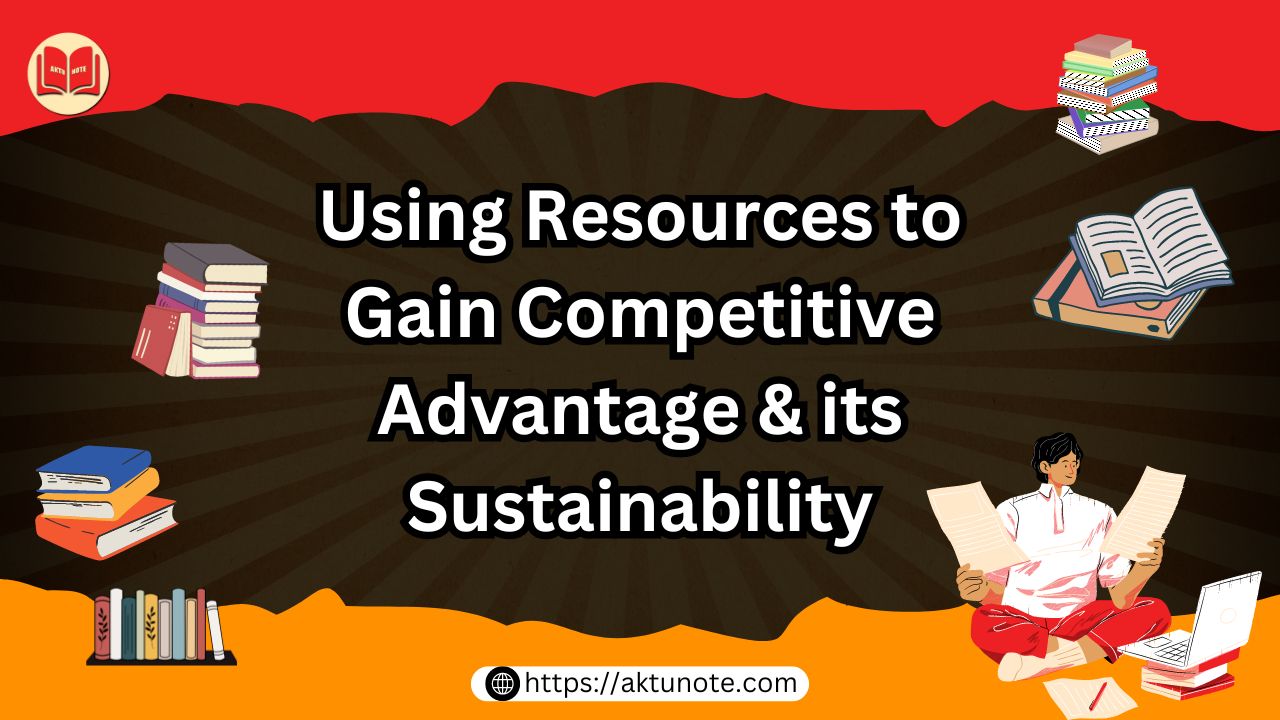Picture this: you’ve got a cozy, well-stocked kitchen, a flair for cooking, and a knack for throwing the best neighborhood potlucks. Your special recipe for brisket has everyone talking, and your signature cocktails are the hit of the block. In the business world, the equivalent of this setup is leveraging your unique resources to gain a competitive advantage. But having an edge isn’t just about the initial wow factor; it’s about sustaining that advantage over time. Let’s dive into how businesses can use their resources to outshine the competition and keep their winning streak going.
In the highly competitive and dynamic business environment, the ability of a firm to leverage its resources effectively can determine its success and long-term viability. Competitive advantage arises when a company possesses attributes or capabilities that allow it to outperform its rivals. The sustainability of this advantage depends on how well these resources are managed and protected over time. This article explores how organizations can use their resources to gain a competitive advantage and examines the factors that contribute to the sustainability of that advantage.
Understanding Competitive Advantage
Competitive advantage refers to the edge that a firm has over its competitors, allowing it to generate greater value for its customers and higher profitability. It is derived from a combination of factors, including unique resources, superior capabilities, and effective strategies. Competitive advantage can manifest in various forms, such as cost leadership, differentiation, innovation, and customer responsiveness.
Types of Competitive Advantage
The different types of competitive advantage a business can leverage to outperform rivals. Learn about cost leadership, differentiation, focus, and more. Understand how to identify and build a sustainable competitive edge for your organization.
Cost Leadership
Achieved by producing goods or services at a lower cost than competitors, allowing the firm to offer lower prices or achieve higher margins.
Differentiation
Involves offering products or services with unique attributes that are valued by customers, such as superior quality, design, or brand reputation.
Focus Strategy
Concentrates on serving a particular market niche more effectively than competitors, often through specialized products or services.
Using Resources to Gain Competitive Advantage
The Resource-Based View (RBV) of the firm provides a framework for understanding how internal resources can be used to achieve and sustain competitive advantage. According to RBV, not all resources are equal; only those that meet certain criteria—valuable, rare, inimitable, and non-substitutable (VRIN)—can confer a sustainable competitive advantage.
Leveraging Valuable Resources
Valuable resources are those that enable a firm to exploit opportunities or neutralize threats in the marketplace. These resources contribute directly to improving the firm’s efficiency and effectiveness. For instance, a company with advanced technology or a strong brand can deliver superior value to customers, thereby gaining an edge over competitors.
Exploiting Rare Resources
Rarity refers to resources that are scarce relative to demand. If a resource is valuable but also widely available, it may only provide competitive parity. However, if it is rare, the firm can use it to stand out in the market. For example, proprietary technology or exclusive access to certain raw materials can create a significant competitive advantage.
Protecting Inimitable Resources
Inimitable resources are those that cannot be easily replicated by competitors. This could be due to unique historical conditions, complex social relationships, or intangible assets like organizational culture or brand equity. By protecting these resources from imitation, firms can maintain their competitive advantage over time.
Ensuring Non-Substitutability
Non-substitutable resources are those that cannot be replaced by other resources that competitors might possess. For example, a company with a strong patent portfolio that protects key innovations ensures that competitors cannot offer similar products without facing legal challenges.
Achieving Sustainability of Competitive Advantage
Gaining a competitive advantage is only the first step; sustaining it is equally important and often more challenging. Several factors contribute to the sustainability of competitive advantage:
Continuous Innovation
Innovation is crucial for maintaining competitive advantage, especially in fast-paced industries. Companies that continuously invest in research and development can stay ahead of the competition by consistently bringing new products, services, or processes to market. For example, technology firms like Apple and Google sustain their competitive edge through relentless innovation.
Strong Organizational Culture
A strong organizational culture that aligns with the company’s strategic goals can enhance the sustainability of competitive advantage. When employees share common values, norms, and behaviors that support the firm’s objectives, the company is better equipped to execute its strategy effectively and maintain its market position.
Adaptability to Change
The ability to adapt to changes in the external environment—such as shifts in customer preferences, technological advancements, or regulatory changes—is critical for sustaining competitive advantage. Firms that can quickly pivot their strategies and realign their resources in response to external pressures are more likely to sustain their advantage over the long term.
Strategic Alliances and Partnerships
Forming strategic alliances or partnerships can help sustain competitive advantage by leveraging the strengths of other organizations. Collaborations can provide access to new markets, technologies, and resources that would be difficult to develop independently. For instance, joint ventures in the automotive industry allow companies to share the costs and risks associated with developing new vehicle technologies.
Effective Resource Management
Sustaining competitive advantage requires ongoing management and investment in the firm’s resources. This includes not only maintaining existing resources but also continuously developing new ones. Companies that manage their resources effectively—by reinvesting in human capital, upgrading technology, and nurturing customer relationships—are better positioned to sustain their competitive advantage.
Building and Maintaining Brand Equity
Brand equity is an intangible asset that can provide a significant and sustainable competitive advantage. Companies with strong brand recognition and loyalty enjoy customer trust, which can be difficult for competitors to erode. Maintaining brand equity requires consistent delivery of quality, effective marketing, and a positive customer experience.
For More Content Check Out :- KMBN 301
Conclusion
Gaining and sustaining a competitive advantage is about more than just having the best tools or skills; it’s about strategically leveraging these resources and maintaining their effectiveness over time. Just as a well-run kitchen and a unique recipe can make you the star of the neighborhood potluck, businesses can use their valuable, rare, and unique resources to outshine the competition. The Resource-Based View (RBV) framework offers a valuable lens for firms to assess and utilize their internal resources strategically. However, staying on top requires ongoing effort—continuous innovation, effective resource management, and adapting to market changes. By managing resources smartly, investing wisely, and keeping a close watch on the market landscape, companies can ensure their competitive advantage is not just a fleeting success but a lasting one.

